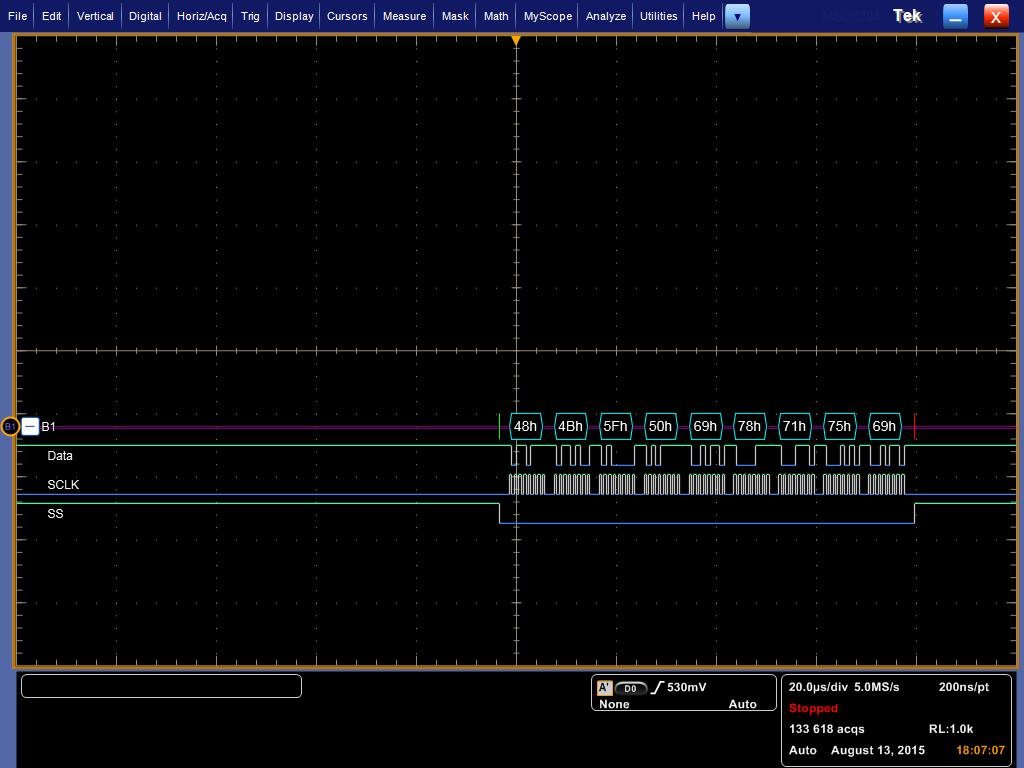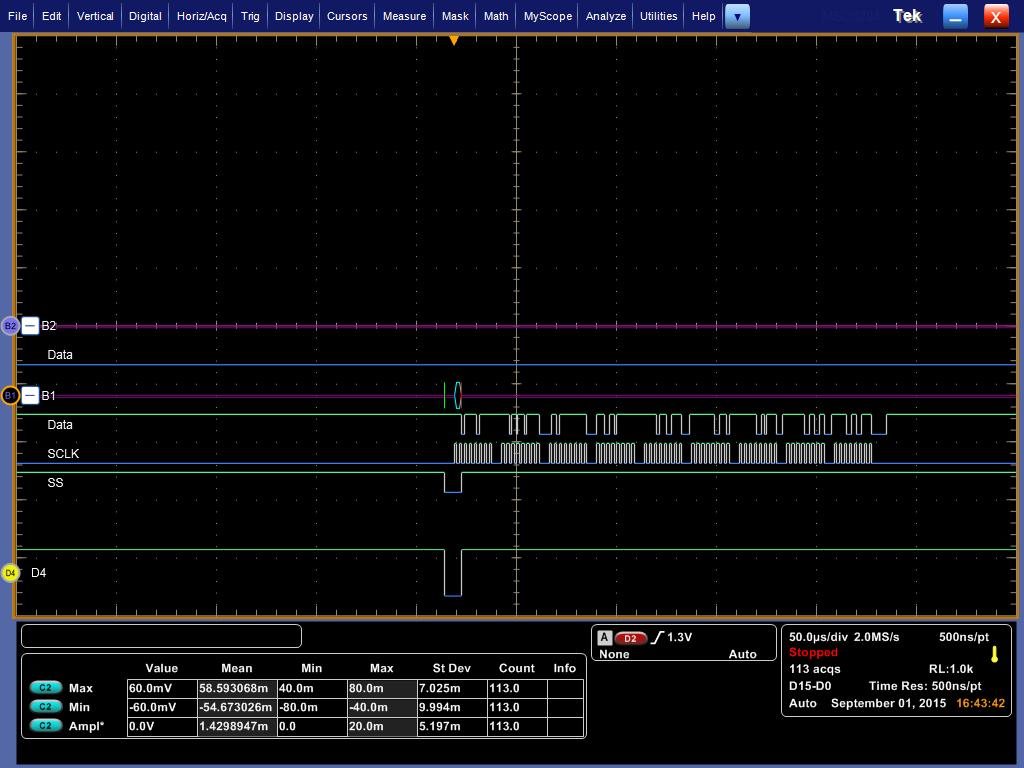Hello,
I'm implementing a SPI communication with the microcontroller TM4C123GH6PZ, but the chip select signalsI am driving through GPIO independently.
So far performed correctly I am sending as shown in the picture
However, to reprogram for sending other bytes, the chip select not operate in the same way and instructions appear to be performed sequentially. That is, it goes high before the bytes are sent as shown in fig.
Does anyone have any idea what happens?
This is the frame of the code
...
GPIOPinWrite(GPIO_PORTF_BASE,GPIO_PIN_7 , 0x00);
SysCtlDelay(10);
SSIDataPut(SSI3_BASE, 'H');
SSIDataPut(SSI3_BASE, 'K');
SSIDataPut(SSI3_BASE, '_');
SSIDataPut(SSI3_BASE, 'P');
SSIDataPut(SSI3_BASE, 'i');
SSIDataPut(SSI3_BASE, 'x');
SSIDataPut(SSI3_BASE, 'q');
SSIDataPut(SSI3_BASE, 'u');
SSIDataPut(SSI3_BASE, 'i');
while(SSIBusy(SSI3_BASE))
{
}
SysCtlDelay(10);
GPIOPinWrite(GPIO_PORTF_BASE,GPIO_PIN_0 | GPIO_PIN_7, 0xFF);



